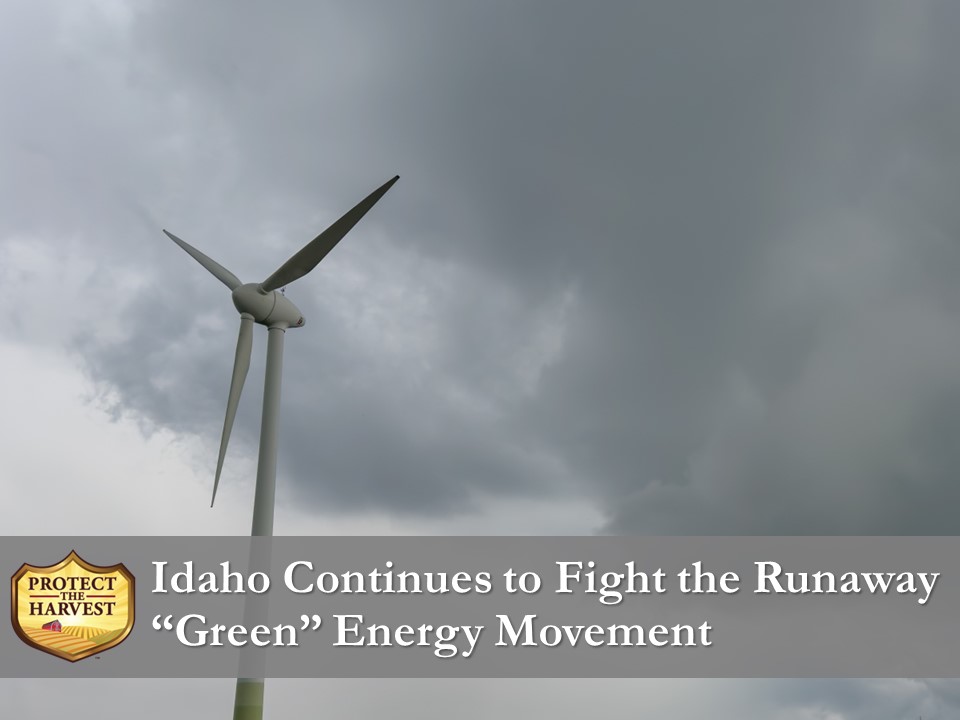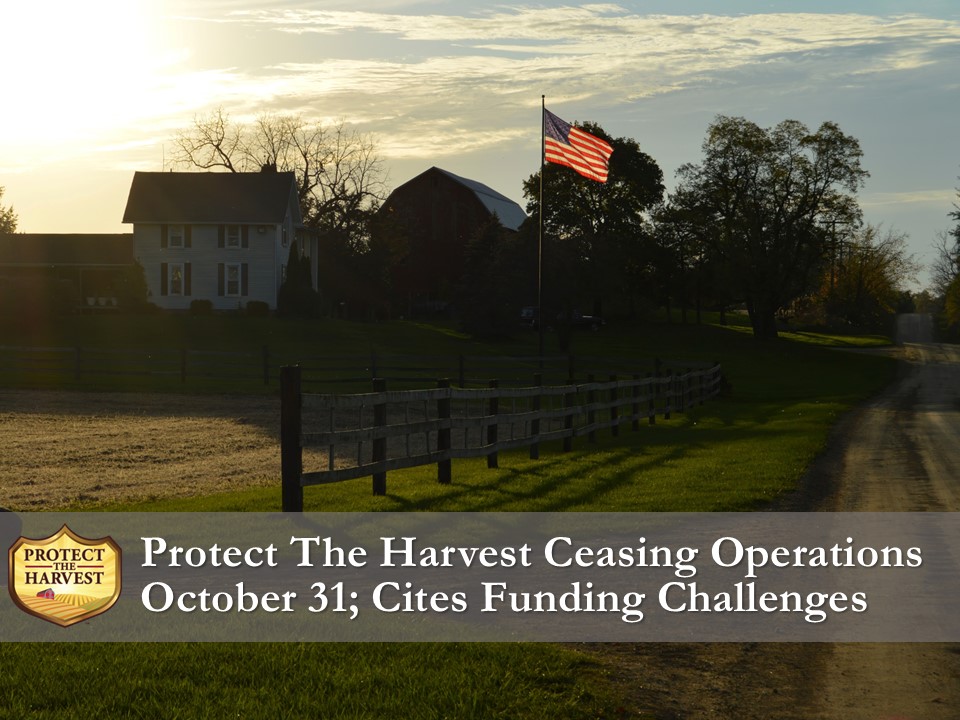After several years of controversy, the embattled Lava Ridge Wind Project near Twin Falls, Idaho is set to proceed, but at approximately half of the originally proposed size. The project was originally planned to spread over 197,000 acres, with 400 wind turbines as tall as 740 feet. The project plan has been revised to cover 104,000 acres, with 241 turbines no taller than 660 feet.
The Bureau of Land Management (BLM) released its final environmental review in June 2024, giving the scaled-down project the go-ahead. In a press release, it was stated that the unelected agency’s decision “was shaped by public input and meetings, listening sessions, and significant engagement with local landowners and ranchers, Tribal Nations, federal, state and county elected leaders, interested organizations, the BLM’s Resource Advisory Council for the area, and the National Park Service.”
However, many Idahoans feel that all of the outreach, stakeholder meetings, and legally required public comment periods were nothing more than procedural posturing, and that the BLM never had any intention of putting a stop to the project due to their environmental extremist leadership. The BLM is headed by Tracy Stone-Manning, whose antihuman views and past involvement in eco-terrorism have been well documented.
In a fiery hearing following the release of the BLM’s review, Idaho US Senator Jim Risch questioned Stone-Manning, listing the numerous groups and entities that objected to the project, including the BLM’s own Resource Advisory Council, who voted unanimously against it.
Senator Risch pointed out that Stone-Manning’s previous involvement with Idaho was engagement in a conspiracy to spike trees in the national forest in Idaho. Stone-Manning testified against her co-conspirators in exchange for an immunity agreement. The others were convicted; Stone-Manning went on to be appointed the head of the BLM, despite a multitude of objections.
Stone-Manning stated in the hearing that the Lava Ridge project would provide power for 500,000 homes; Senator Risch pointed out that those homes are in California.
“Why don’t you put this project in California? If they need the energy so bad, do it down there. We don’t want this project in Idaho,” said Senator Risch.
On the day the BLM’s report was issued, Lieutenant Governor Scott Bedke stated:
“Our public lands have long been utilized for multiple uses that meet the needs and fulfill the benefits of Idahoans. Ranching, farming, and recreation are a major part of the Magic Valley’s heritage. While domestic energy production is an emerging part of a necessary conversation, the BLM disregarded Idahoans’ input on a project that is in our backyard and, instead, favored Californians energy needs.”
Idaho Governor Brad Little said that the project is the “latest example of the Biden administration’s unsound energy agenda…It may not matter in Washington, D.C., but it matters to those of us who live here.”
Idahoans are far from giving up the fight. On August 1, 2024, Senator Risch introduced legislation that would delay the Lava Ridge Wind Energy Project, by preventing the Secretary of the Interior from authorizing it until a GAO study is conducted to examine the impact on the Minidoka National Historic Site, which was an internment camp for Japanese people during World War II. Chairman of the Senate Committee on Energy and Natural Resources, Joe Manchin, committed to placing this bill on the agenda for a September meeting.
Idaho’s Big Green Problem is Only One of Many
The problem in Idaho is sadly just one of many similar or identical problems across the nation, all of which are mere symptoms of the green energy disease plaguing our society. Federally subsidized investors scramble for opportunities to install “green” energy infrastructure while being aided by complicit politicians and unelected bureaucrats.
As these projects continue to emerge and the nation’s network of green infrastructure is forcibly expanded, a broad range of issues with wind turbines are being revealed, from structural failures and collapses to devastating effects on wildlife.
Turbine collapses and mechanical failures create a great hazard to anyone and anything in the surrounding area. The brake failure of a turbine in Ayrshire, Scotland was videoed, shooting sparks and eventually shattering the blades and sending massive pieces of debris flying in a wide radius. In July 2024, the collapse of offshore turbines near Nantucket, Massachusetts left debris in the ocean and washing ashore, in addition to incalculable amounts of fiberglass particles in the water. These kinds of events are not uncommon, and the actual environmental costs of wind turbines are far greater than the gains. In fact, a Harvard study found that in many cases, wind turbines cause more warming than their emissions reductions would prevent.
Even with ever-increasing numbers of wind turbines in the United States, wind power still only accounts for about 11% of the nation’s energy, according to the U.S. Energy Information Administration (EIA). Tom Harris, executive director of the International Climate Science Coalition, stated that wind turbines “require a backup fossil fuel plant that continues burning 90% of the time, making the wind turbine largely unnecessary, and in essence, just for show…This is a far cry from the environmentally friendly image that is presented to the public.”
Even after wind turbines are decommissioned, or having their blades replaced and disposed of, the waste presents major problems. Most of these used blades end up in landfills after roughly 20 years of use. However, because of the available federal subsidies, many wind turbines are being replaced long before their expiration dates, which has increased the flow of used blades being disposed of. There are a limited number of facilities capable of recycling the wind blades, which are made of fiberglass and strong plastic and are difficult to recycle. For most wind farms, transporting the blades to such a recycling facility is simply not logistically feasible or cost-effective. A study by the National Renewable Energy Laboratory (NREL) found that by 2050, 235,000 wind blades will be decommissioned.
Aside from the tragically comical failure of the turbines to be the environmental savior they are portrayed to be, they are a true eyesore on once pristine landscapes. It’s highly ironic and hypocritical that the “green” movement, otherwise so utterly hell-bent on erasing man’s mark on the land, can conveniently turn a blind eye to the lofty mechanical monstrosities.
Research Buried Regarding Wind Turbines vs Protected Birds
Idaho is already defaced by approximately 500 wind turbines, mostly along the Snake River Plain. The location of the majority of these wind turbines also creates a unique problem: Idaho is also home to the Morely Nelson Snake River Birds of Prey National Conservation Area (NCA), as well as the World Center for Birds of Prey. Wind turbines are notoriously hard on bird populations, but this fact is downplayed or blatantly ignored.
The Golden Eagle Project has researched golden eagles in conservation areas for over 50 years. The project is staffed by a collaborative group of researchers from the United States Geological Survey (USGS), BLM, Boise State University, and others. The group previously published on its website: “…because of this work, we have been able to see that golden eagle territory occupancy in the NCA has declined by 40% in the past 50 years with half of that decline occurring in the most recent 15 years.”
According to some researchers, this type of evidence is systematically pushed under the rug and has been for years. Jim Wiegand is a retired ecologist and wildlife biologist. He has been an outspoken critic of the wind energy industry and the shameful way that condemning research is hidden to help advance the greedy “green” agenda. His Twitter/X profile description reads: “My expertise has exposed a mountain of fraudulent green research produced by NASA, CA DFW, Interior Department & a renegade wind industry.”
In 2013, Wiegand wrote in a column titled “If I were head of the U.S. Fish and Wildlife Service”:
“I would initiate a series of truly constructive wildlife studies to determine the cumulative damage that has been done by these wind turbines. These studies have been avoided for over 28 years. Not one of the sell-out experts that worked on bogus wind industry studies would be a part of any of these new studies. I would set up a DNA data bank that would prove to the world that eagles and other species killed at wind farms were being killed from populations thousands of miles away. The USFWS is already in custody of many such carcasses. Analyzing these carcasses alone and comparing them to remote populations would probably be enough to establish vast mortality footprint of wind turbines.”
The effects of wind turbines on bird populations are the most extreme, but the turbines also have detrimental effects on all wildlife, mainly due to population displacement. Wiegand contends that many conservation groups are sell-outs because they receive funding for their silence. Some groups, such as the Audubon Society, even help promote the development of “green” energy infrastructure. One Twitter/X post from the Audubon Society stated:
“Improved federal permitting to speed responsible development of clean energy and transmission leads to far better outcomes for birds and people. So far @WhiteHouse has delivered results to build more projects while protecting communities and our environment.”
It’s appalling, but sadly not surprising, just how quickly supposed champions of the environment will sacrifice their principles when there is substantial revenue involved. When the subsidies dry up and wind turbines are abandoned for the next big money-making scheme, what’s left behind will be a colossal amount of waste and irreversible damage to local economies and ecology.
The United States currently has nearly 74,000 wind turbines. It has been estimated that at least another 500,000 would be needed to meet the insane net-zero goals of the globalist, environmental extremist movements.
Even while there are those doing everything they can to stand against the Big Green agenda, the only thing that can truly turn the tide at this point is a change in federal administration.
Related links:
More about Idaho wind farms HERE
Lava Ridge winners and losers HERE
BLM managed by environmental extremists HERE
Not so green energy HERE
Read commentary from Jim Wiegand HERE
Watch video clip from Senate Energy Committee Oversight Hearing HERE
Watch video clip of wind turbine shattering in Ayrshire, Scotland HERE



